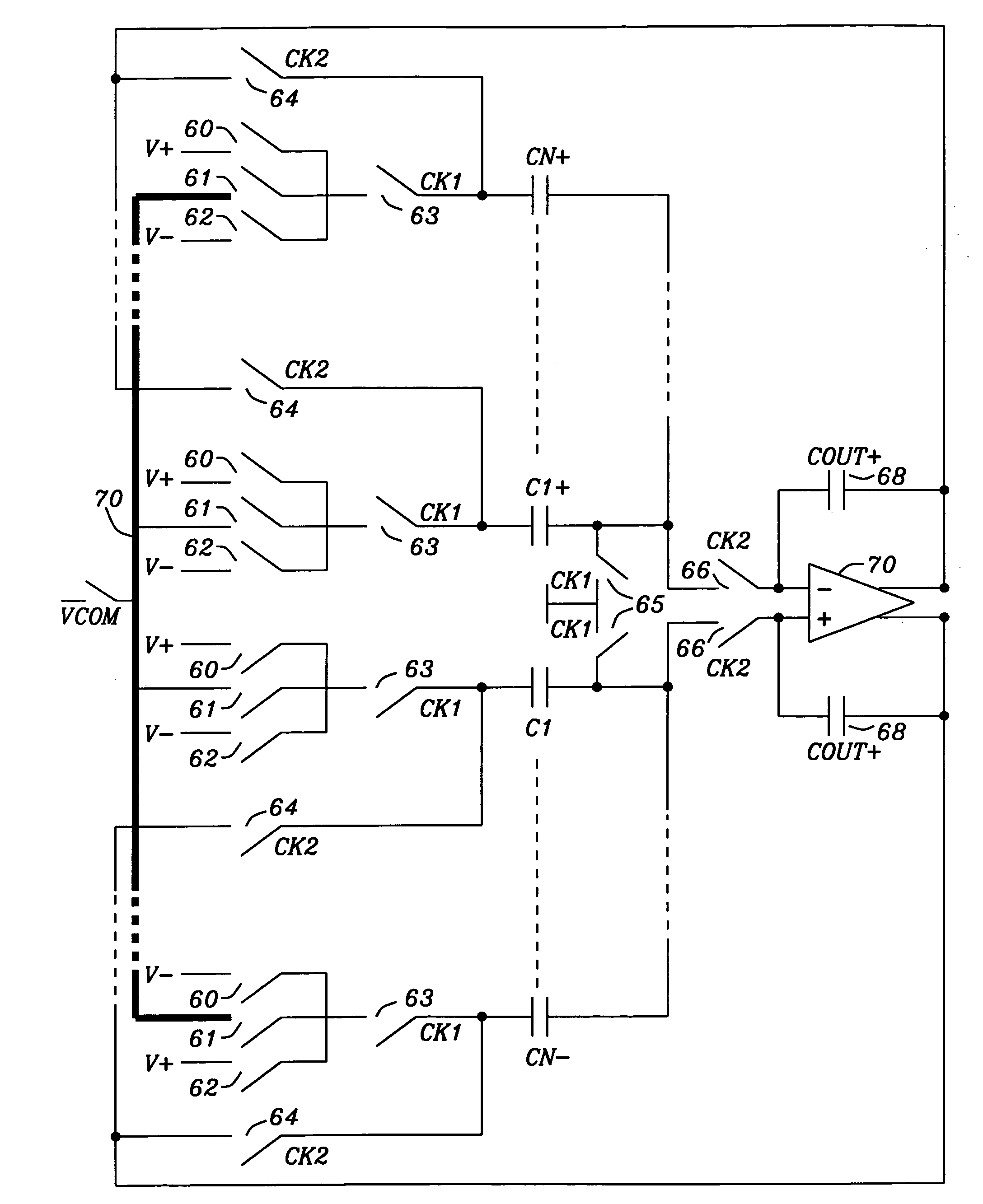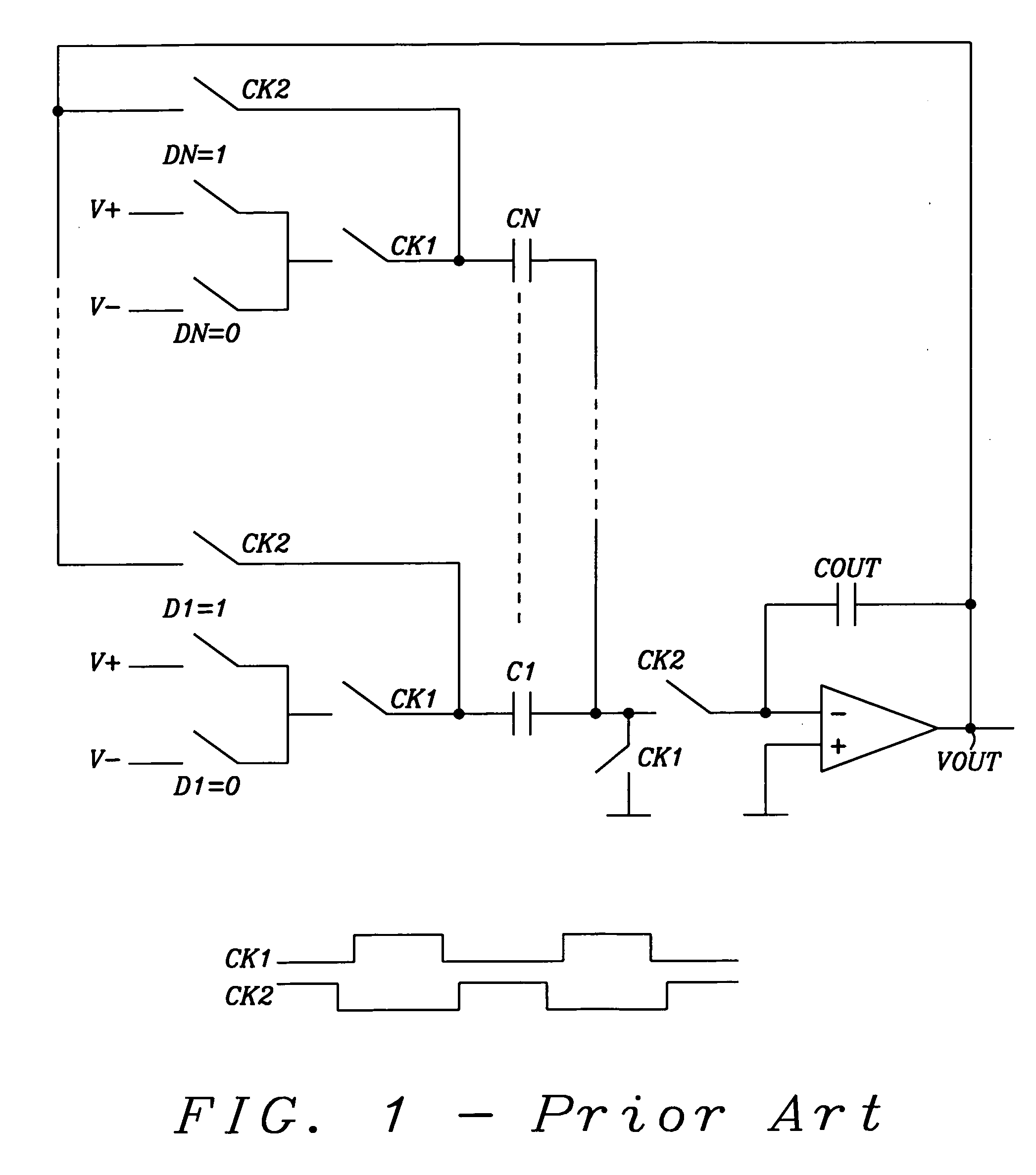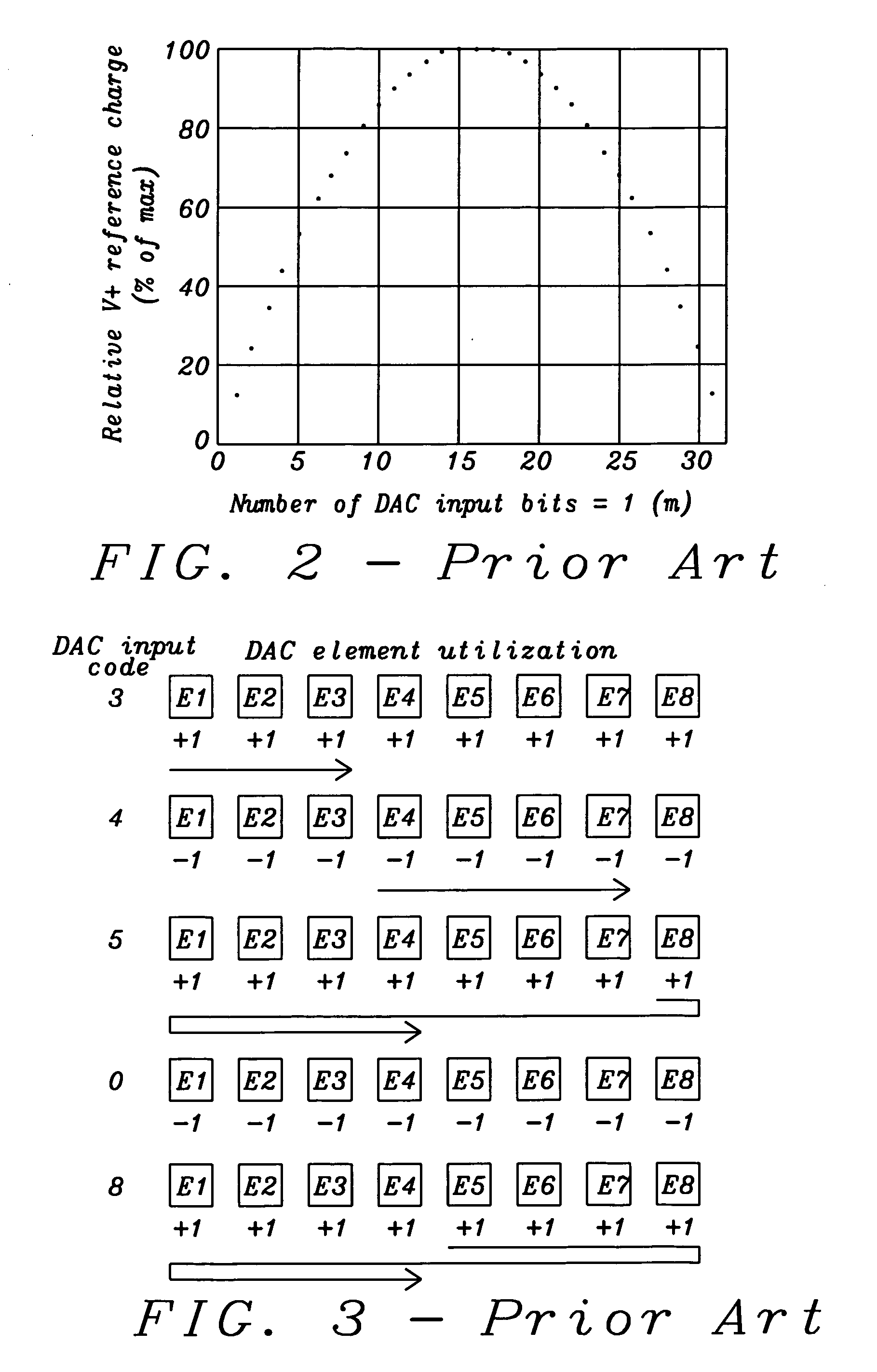Tri-level dynamic element matcher allowing reduced reference loading and dac element reduction
a dynamic element and matching technology, applied in the field of three-level dacs, can solve the problems of mild roll-off of gain, phase distortion, and inability to achieve perfect reconstruction filter practicably, and achieve the effect of reducing power consumption
- Summary
- Abstract
- Description
- Claims
- Application Information
AI Technical Summary
Benefits of technology
Problems solved by technology
Method used
Image
Examples
Embodiment Construction
[0066]The preferred embodiments disclose methods and systems to implement rotation-based Dynamic Element Matcher (DEM) techniques suitable for multi-bit DAC implementations. Unlike the well-known data weighted averaging (DWA) rotation method, described by the references above in the prior art section) and the majority of other known noise-shaping DEM algorithms, the method invented is applicable to DACs constructed from 3-level DAC elements.
[0067]Without a suitable DEM algorithm, using 3-level DAC elements would be impractical in most cases.
[0068]A key advantage of using 3-level elements is that in switched capacitor (S / C) DAC implementations, using 3-level DAC elements allows reduction of the maximum charge that the reference voltages must provide on any clock cycle, i.e. reduced reference currents. Reducing the reference currents offers twin benefits of reducing both power dissipation in the reference voltage generation (important for low-power DACs) and also reference voltage dro...
PUM
 Login to View More
Login to View More Abstract
Description
Claims
Application Information
 Login to View More
Login to View More - R&D
- Intellectual Property
- Life Sciences
- Materials
- Tech Scout
- Unparalleled Data Quality
- Higher Quality Content
- 60% Fewer Hallucinations
Browse by: Latest US Patents, China's latest patents, Technical Efficacy Thesaurus, Application Domain, Technology Topic, Popular Technical Reports.
© 2025 PatSnap. All rights reserved.Legal|Privacy policy|Modern Slavery Act Transparency Statement|Sitemap|About US| Contact US: help@patsnap.com



